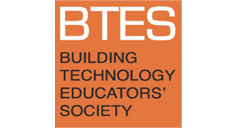Labor Movements: From the Specifications of the Panama Canal to Robotic Patents
Abstract
This paper is part of an ongoing collaboration between architecture faculty and students. The paper highlights two student projects from a recent research studio focused on the link between regulatory documents (specifications, laws, codes, patents, etc.) and the political territories that connect building technology with the movements of construction labor. Each project interconnects two types of movement: (1) physical movements of people, materials, and machines (2) political movements and colonial structures of power. The former are visible and have limited durations, while the latter are seemingly invisible but with enduring consequences. The contemporary effects of these movements are latent in the underexamined histories of written regulatory documents.
In the first project, these two types of movement intersect in the construction of the Panama Canal. The strategy for this analysis is based on visualizing concrete specifications, sanitation laws, and construction images collected from the Nichols Notebook Archive. These documents juxtapose unpredictable site conditions, yellow fever and the movement of people, with the pursuit of material predictability, such as engineered concrete. These two scales collide at the margins of the oceanic trade route, stressing the tensions between exploitative imperialist bodies and the bodies of local and migrant workers. Overlapping with the timeline of the Panama Canal construction, the second student project connects the language of twentieth century U.S. Labor Acts with the evolution of KUKA Robotic Patents. The influx of twentyfirst century industrial construction robots highlights the political implications of choreographing movement on the worksite. Both projects resulted in a series of strategies used to visualize the movements of labor, arguing that labor conditions are central to technological processes, yet peripheral to traditional architectural discourse. Examining postcolonial theory and automation discourse through the study of written regulations makes a case for expanding transdisciplinary knowledge across multiple scales of visible and invisible movements.
Keywords: pedagogy, history, labor, construction, specifications, patents, robots
How to Cite:
Garcia Lammers, F., Garcia Fritz, J., Krueger, N., Kenny, J. & Woytassek, R., (2021) “Labor Movements: From the Specifications of the Panama Canal to Robotic Patents”, Building Technology Educators’ Society 2021(1). doi: https://doi.org/10.7275/vxr2-0k71
Downloads:
Download PDF
442 Views
124 Downloads

